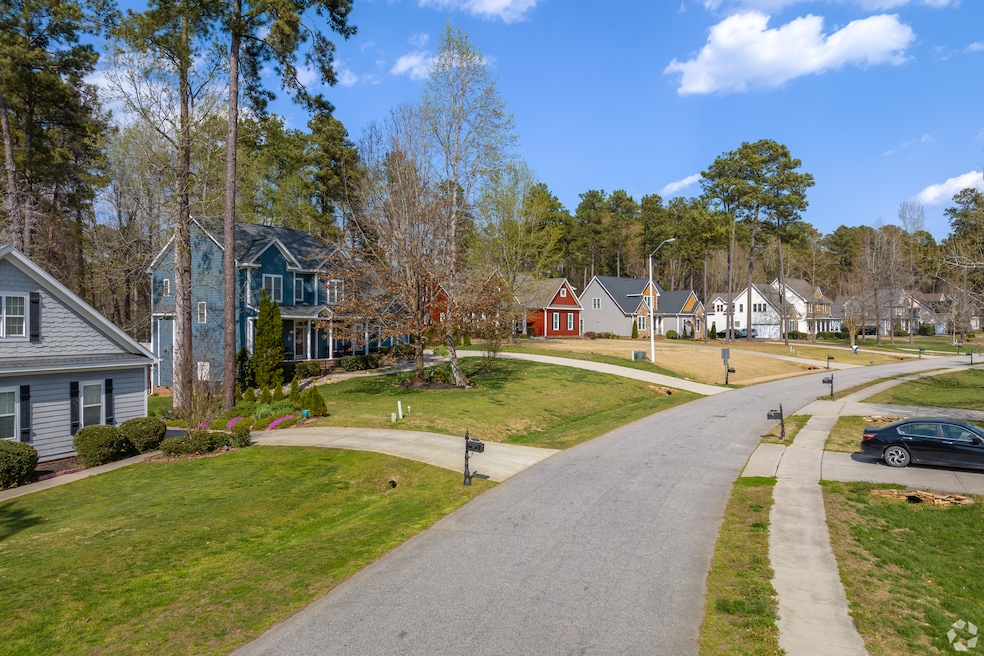To see where the rapid rise in the number of houses on the market around Raleigh, North Carolina, is most evident, head for Youngsville, a town on the region’s northeast edge.
The town had just over 2,000 residents in 2000, according to the U.S. Census, but with people moving there in droves since then, town officials project that the population could be 10 times that in another 25 years. Homes.com data shows that Youngsville’s inventory of residential property for sale grew by 90% in July compared to one year earlier. The same was true for Wake Forest, a more-established suburb four miles to the south.
“Wake Forest is a hugely popular destination for housing, but by going a little further north, folks can get a little more for their money,” Dave Harney, an agent with Coldwell Banker Advantage active in Youngsville, told Homes.com.
Other areas around Raleigh’s periphery saw dramatic inventory growth in July, notably Fuquay-Varina, which grew 83% from a year earlier, and South Cary, up 67%. These numbers contributed to the Raleigh region’s overall hike in supply of 55%, which was a faster pace than any other metropolitan area in the country.
New home construction and escalating prices have contributed to the rapid inventory growth, although prices have slowed down somewhat in recent months, said Nick Leverett, a Homes.com market analyst.
“The area is much less affordable than it was five years ago,” he said. “Also, some people who are able to buy are waiting and hoping for interest rate cuts, which will lower their mortgage payments. In addition to more existing homeowners putting their homes up for sale, builders are completing a lot of new houses in the Raleigh market.”
Prices cool as supply rises
The median home sale price in Raleigh rose just 1.2% in July, according to Homes.com data, to about $446,000. That’s still substantially higher than the national figure of $393,000, and higher than other southeastern cities such as Charlotte and Atlanta. But July was the sixth straight month that prices in the region rose less than in the nation as a whole.
Raleigh’s prices rose rapidly during the pandemic as people flocked to the region. And they continue to come: A U.S. Census report last spring found a 2.6% rise in population for the region from 2023 to last year, one of the fastest growth rates in the country. That growth and people seeking affordability have pushed up prices in the suburbs, pressuring towns to build new roads, parks and other facilities to meet the demand.
“We are constantly growing, and where are we going to put all these people?” Jamie Ferguson, a real estate agent in Raleigh and Cary, told Homes.com. “The idea of suburbia is quickly fading, because these places are creating their own resources. More schools, shopping areas, entertainment and athletic parks are huge right now.”
She pointed to the example of Holly Springs, a town south of Raleigh she lived in 25 years ago. At the time, it had fewer than 10,000 residents and now has nearly 49,000, according to the U.S. Census.
“It’s not even remotely the same town anymore,” she said.
Harney said one of the draws recently for people looking to buy around Youngsville and neighboring Franklinton is that both towns have seen a “renaissance” in new restaurants, bars and entertainment options. The towns also benefit from their location on U.S. 1, a major north-south route into Raleigh, he said. Commuters can easily reach the Research Triangle Park, where a large number of jobs are clustered, and the Raleigh-Durham International Airport.
The rising supply of homes for sale across the region has caused prices to cool, Leverett said, as buyers have more choices and face less competition than in prior years. Some builders are also offering significant incentives in the form of lower closing costs and interest rate buy-downs, he said.

